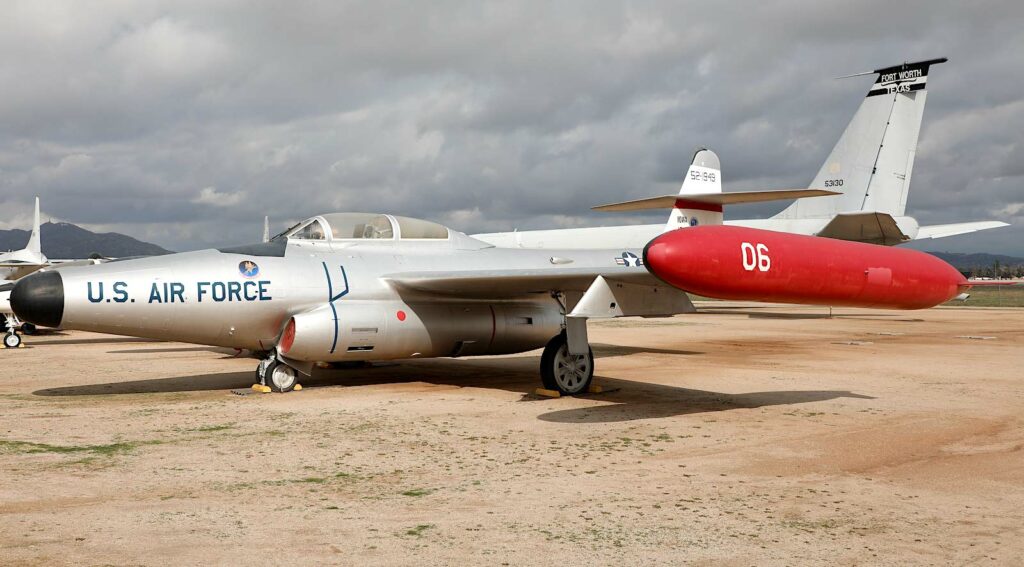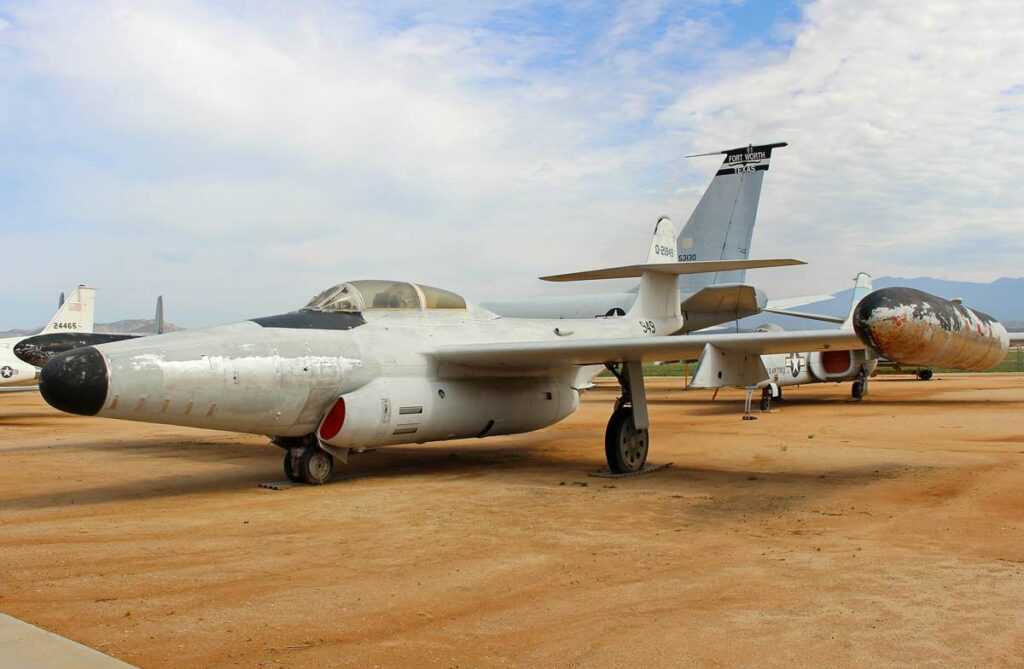The Northrop F-89 Scorpion was a U.S. Air Force all-weather interceptor from the 1950s, notable for its twin-jet design and armament.
In brief
The Northrop F-89 Scorpion, serving in the 1950s and 1960s, was a key U.S. Air Force all-weather interceptor designed for the defense against Soviet bomber threats during the Cold War. As one of the first jet-powered interceptors in the USAF’s arsenal, the F-89 was distinctive for its twin-engine, straight-wing design, and innovative armament that included air-to-air rockets. It played a crucial role in air defense with its advanced radar and fire control systems, which enabled it to operate effectively in all weather conditions. Despite its initial design challenges, the Scorpion was an essential step in the evolution of jet fighters and air defense strategy during a critical period of global tension.
The Northrop F-89 Scorpion represents a significant period in the development of jet fighters and air defense systems during the early Cold War era.

History of the Development of the Northrop F-89 Scorpion
In the post-World War II era, the onset of the Cold War and the development of long-range bomber aircraft by the Soviet Union posed new challenges for the United States Air Force (USAF). There was a pressing need for an effective all-weather interceptor that could defend the U.S. against potential aerial threats. This requirement led to the development of the Northrop F-89 Scorpion.
The program was launched by Northrop Corporation, with the objective of creating a jet-powered interceptor that could operate in all weather conditions, equipped with advanced radar and fire control systems for air defense. The development of such an aircraft was crucial in an era when radar technology was still in its infancy, and jet propulsion was becoming the standard for military aircraft.
The F-89 made its first flight on August 16, 1948. While the Scorpion did not receive a specific NATO nickname, it became a prominent fixture in the USAF during its service life.
Design of the Northrop F-89 Scorpion
The Northrop F-89 Scorpion was a twin-engine, straight-wing aircraft, which was a common design choice in the early days of jet fighters. The aircraft was approximately 16.4 meters (53 feet 10 inches) long with a wingspan of 21.3 meters (70 feet).
The F-89’s airframe was designed to accommodate a variety of advanced systems, including radar and fire control systems necessary for its all-weather interceptor role. Its radar allowed for the detection and tracking of enemy aircraft, even under adverse weather conditions.
One of the notable features of the Scorpion was its armament. The F-89 was initially equipped with machine guns and later, air-to-air rockets, including the unguided Genie nuclear rocket, which marked a significant development in aerial warfare capabilities.
However, the design of the F-89 also had drawbacks, such as its straight-wing configuration, which limited its top speed compared to later swept-wing designs.
Performance of the Northrop F-89 Scorpion
The F-89 Scorpion’s performance was reflective of the early jet age. Powered by two Allison J35 turbojet engines, later models used the more powerful J33 engines. The aircraft’s top speed was around 1,040 km/h (645 mph), with a service ceiling of over 15,000 meters (49,000 feet) and a range of approximately 2,400 kilometers (1,490 miles).
Compared to contemporaries like the Lockheed F-94 Starfire, the F-89 had a better range and payload capacity but was generally slower due to its straight-wing design. Its role as an all-weather interceptor was more specialized compared to some other fighters of the era.
Variants of the Northrop F-89 Scorpion
Several variants of the F-89 were produced throughout its service life. The initial F-89A and B models were followed by the F-89C, which featured more powerful engines and other improvements. The F-89D introduced wingtip rocket pods, significantly enhancing its firepower.
The F-89H and J variants further refined the aircraft’s capabilities, with the F-89J being notable for carrying the Genie nuclear air-to-air missile. Each variant aimed to improve the aircraft’s performance, armament, and electronic systems.

Military Use and Combat of the Northrop F-89 Scorpion
The F-89 Scorpion primarily served in the air defense role within the United States, tasked with intercepting potential Soviet bombers during the Cold War. It was a crucial component of North American air defense in the 1950s and early 1960s.
While the F-89 was not used in direct combat, its presence and capabilities significantly contributed to the USAF’s deterrence posture during the Cold War. The Scorpion was eventually replaced by more advanced interceptors, such as the F-102 Delta Dagger and the F-106 Delta Dart, which offered higher speeds and more advanced technologies.
The F-89 was not exported to other countries and was retired from active service in the USAF by the mid-1960s.
The Northrop F-89 Scorpion played a vital role in the evolution of air defense during a pivotal era in military aviation history. As one of the first jet-powered all-weather interceptors, it helped bridge the gap between propeller-driven fighters and the advanced jet interceptors that followed. The Scorpion’s development and deployment underscored the importance of adapting to new technologies and strategies in response to evolving global threats, setting the stage for future innovations in fighter and interceptor design.
Back to the Fighter Jet section.